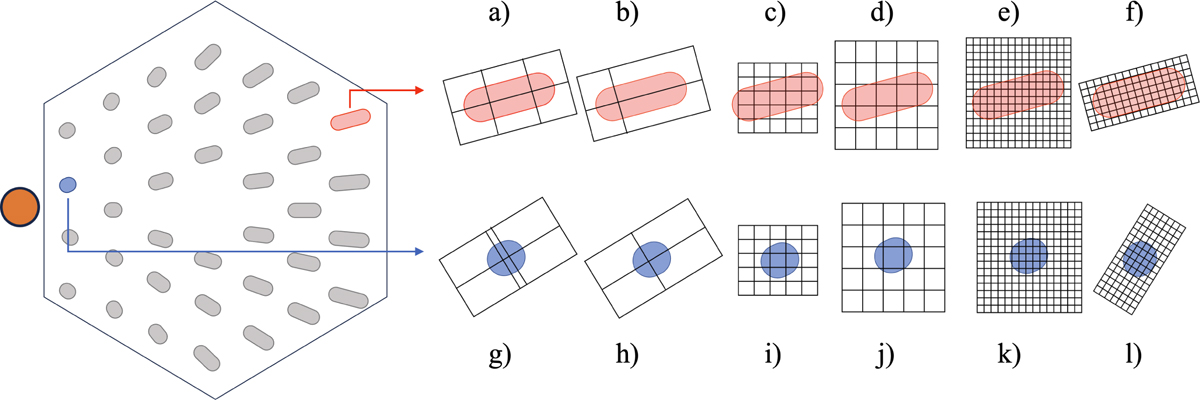Fig. 10

Download original image
Didascalic comparison among the ingot and SH WFSs used with an LGS fired alongside (propagated from the orange aperture left to the pupil) the hexagonal shaped telescope aperture. As the elongation varies across the entrance pupil, two cases of very mild (blue spots) and extreme (red spots) elongations are taken as representative in the six-pupil and three-pupil ingot configurations and for the SH approach. Of course, in the six-pupil ingot case, a single device is used but its projected elongation on the LGS pattern is inherently adjusted as depicted in cases (a) and (g), respectively; while cases (b) and (h) refer to the three-pupil ingot case. For the SH approach various examples are shown with nominal sampling as in (i), which could translate into the need for truncation as depicted in case (c) for a limited format detector. This can be overridden with coarse sampling as in cases (d) and (j) or with a large-format detector as in cases (e) and (k). The use of specifically designed polar detectors, briefly mentioned in the text, is outlined for cases (f) and (l) where of course the general case of an arbitrary angle between the pixel arrangement and the LGS elongation. It is clear that, as long as light distributions across the elongation is not used, the SH case is suboptimal with respect to the six-ingot case and the three-ingot case is lacking with respect to the former just along the elongated axis, y.
Current usage metrics show cumulative count of Article Views (full-text article views including HTML views, PDF and ePub downloads, according to the available data) and Abstracts Views on Vision4Press platform.
Data correspond to usage on the plateform after 2015. The current usage metrics is available 48-96 hours after online publication and is updated daily on week days.
Initial download of the metrics may take a while.


